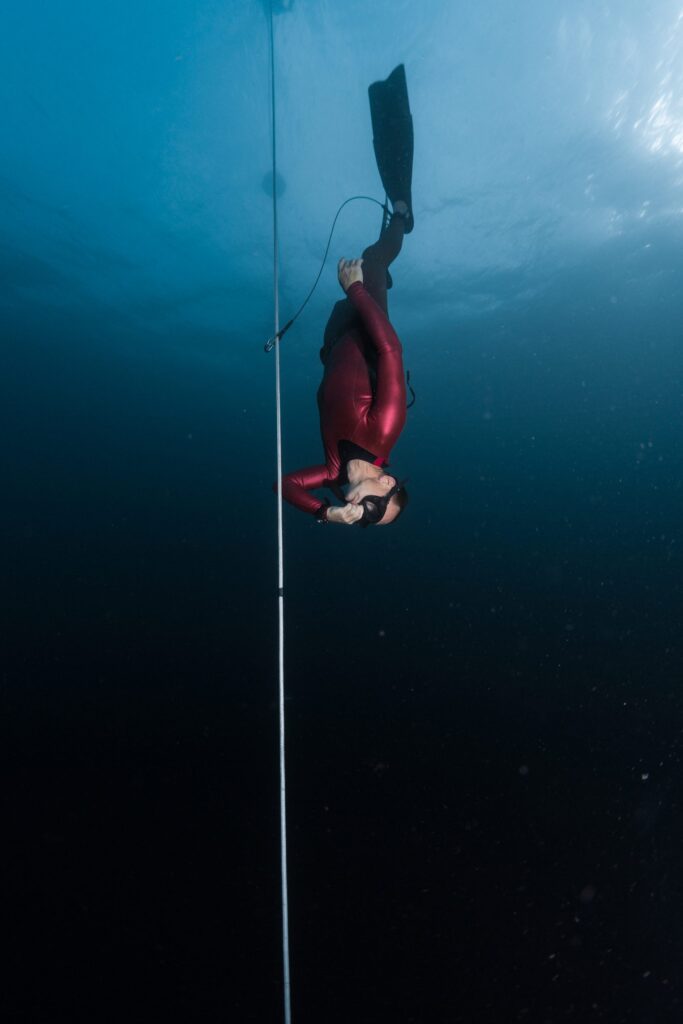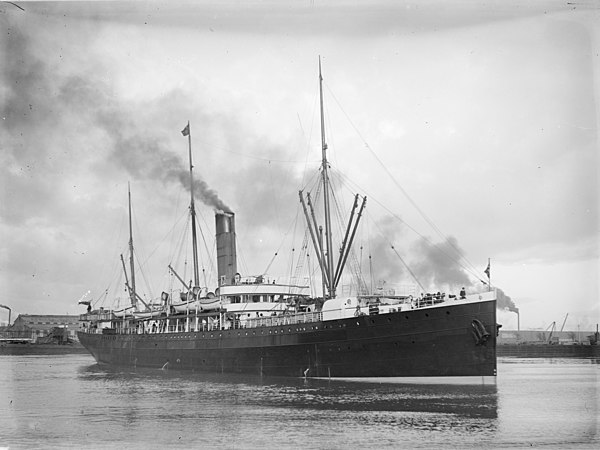Because the ocean is so vast and available for free it is often called upon to act as a venue to stage unusual acts with actors hell-bent on setting world records. I could tell you about the Arctic explorers or the TransPac sailboat race winners but here I’ll bring you somewhat smaller records. Who knows, you might want a crack at setting one yourself.

The deepest free dive, that is swimming from the surface and returning under one’s own power (with a mono fin), is 426-ft 6-in, set by Alexey Molchanov on July 18th 2018. But between this and the deepest overall dive are more than two dozen variations of the protocols. At the extreme bonehead end of the list is ‘no limit freediving.’ In this event the diver holds onto a weighted sled which drops down a cable and uses air bags to drag themselves back up. Four people have gone below 560 feet and two of them died. The current record is held by Herbert Nitsch who descended to at 831 feet though there is some dispute because he was injured and this can be considered grounds for disqualification. Still he had held the record before of 702 feet so there’s that. He held his breath for nine minutes. By the way the record for breath-holding in the ocean is 22 minutes. If I tried to hold my breath for that long my heart and lungs would soon be on their way to new owners.
Those are some vertical records but there are countless horizontal ones. Pablo Fernandez swam 155 miles without stopping in Miami on 19-20 July 2021 breaking a record set 15 years earlier. Well, the water is pretty warm in Florida but picture Sarah Thomas who just a year before her swim was treated for breast cancer. She swam the English Channel in 2019 to bring awareness to that cause. It took her 54 hours. That’s a pretty long time for a professional-level 20-mile swim but not so long when you consider that she immediately swam back, then turned around and swam back and then made a fourth lap because I guess that’s where she left her towel. Strong tides made the actual distance about 130 miles. No stopping, no wetsuit, no whining.
Swimming is hard. How about sailing in a tiny boat across the Atlantic? Robert Manry sailed his 13-ft 6-in Tinkerbelle from Massachusetts to England in 1965 and ‘microyacht’ records became a thing. Tinkerbelle was followed by the 12-ft Nonoalca and 8-ft Bathtub. All crossing the Atlantic Ocean.
Then Hugo Vilhen in 1968 sailed the 6ft April Fool from Casablanca to Miami. Shortly thereafter Vilhen went on to cross the Atlantic in his 5-ft 4-in Father’s Day, and in 2002, Tom McNally attempted, but failed, to cross the Atlantic in the crazy-tiny 3-ft 11-in Vera Hugh II. (Wiki)

Interestingly there seems to be no listing for the longest boat to circumnavigate the world with a single sailor without stopping. It’s all about how fast and the single hand record for this is 42 days, 16 hours, 40 minutes and 35 seconds set by French sailor François Gabart. His trimaran was 100 feet long and it was just him on board. He averaged 31.3 mph and traveled almost 30,000 miles. Much better legroom than the 3’-11” Vera Hugh II.

Finally there is the all important record in a sport many of us have tried. The wide world of stone skipping. I would never have counted my skips if I knew what the record was. This record is in fresh water but hey, water’s water. So what’s the record? 88 skips!!!
Is this possible? What the heck was this stone made of? There are a good many stone skipping associations all over the world. It’s possible that this is the oldest competitive sport. Stone Age people lived a long time ago and by definition they had plenty of stones.
One last record is held by a ship named the Warrimoo. “She reached the intersection of the International Date Line and the Equator at midnight on 31 December 1899. This would have placed her bow in the Southern Hemisphere in summer on 1 January 1900, her stern in the Northern Hemisphere in winter on 31 December 1899. She would therefore have been simultaneously in two different seasons (winter and summer), in two different hemispheres, on two different days, in two different months, in two different years, in two different decades, in two different centuries.” (Wiki)
Too bad she didn’t wait another hundred years and the captain could have added two different millennia as well. The Warrimoo’s feat was big news at the time but the actual fact is there was no way to tell if the ship was in the exact spot especially at night. Still it makes a nice story and at least the crew wasn’t juicing on steroids (Lance, Barry ima looking at you).





Please don’t ever stop telling these stories. They are insanely wonderful!
(And please let me add a link to another record, this one to Tim Fitzhigham for rowing the English Channel in a 1/3-ton Victorian rolltop copper bathtub: https://www.huffingtonpost.co.uk/tim-fitzhigham/english-channel-bathtub_b_17908212.html)
Great one Captain! Bravo!
Aye Captain
That was deep